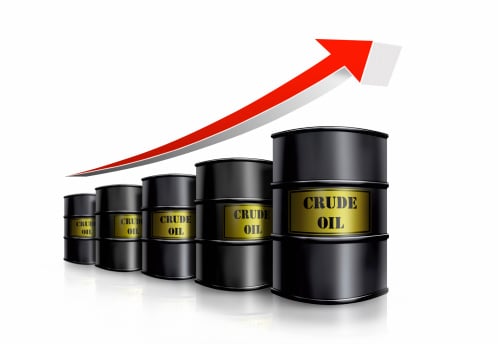
Source: Thinkstock
Total gasoline inventories increased by 200,000 barrels last week and remain in the middle of the five-year average range. Total motor gasoline supplied (the EIA’s measure of consumption) averaged 9.2 million barrels a day over the past four weeks, up about 5.4% over the same period a year ago.
Distillate inventories rose by 2 million barrels last week and remain below the lower limit of the average range. Distillate product supplied averaged 4.1 million barrels a day over the past four weeks, up by 6.9% when compared with the same period last year. Distillate production averaged 5.2 million barrels a day last week, about 200,000 barrels above the prior week’s production.
Tuesday evening, the American Petroleum Institute (API) reported that crude inventories fell by 1.4 million barrels in the week ending May 30, together with a rise of 800,000 barrels in gasoline supplies and a drop of 300,000 barrels in distillate supplies. For the same period, analysts estimated a decrease of 2 million barrels in crude inventories, a rise of 2 million barrels in gasoline inventories and a drop of 1 million barrels in distillate inventories.
ALSO READ: The Best Value Among U.S. Oil Giants
West Texas Intermediate (WTI) crude was trading up about 0.9% above Tuesday’s closing price of $102.66 before the EIA report at around $103.64 a barrel. The WTI price rose to $103.58 a barrel shortly after the report was released.
For the past week, crude imports averaged more than 7.1 million barrels a day, down by 686,000 barrels a day over the previous week. Refineries were running at 90.8% of capacity, with daily input of 16.1 million barrels a day, up 206,000 barrels compared with the previous week’s average.
Crude oil stockpiles in Cushing, Okla., are down by 300,000 barrels, according to API. New pipelines from Cushing to the Gulf Coast have cut Cushing stockpiles by more than 18 million barrels since January.
According to AAA, the current national average pump price per gallon of regular gasoline is $3.663, up from $3.650 a week ago and down from $3.675 a month ago. Last year a gallon of regular cost $3.619 on average in the United States.
ALSO READ: AAA Sees High Summer Gas Prices
Here is a look at how share prices at three U.S. producers reacted to this latest report.
Exxon Mobil Corp. (NYSE: XOM) traded down fractionally, at $100.33 in a 52-week range of $84.79 to $103.45.
Chevron Corp. (NYSE: CVX) also traded down fractionally, at $122.48 in a 52-week range of $109.27 to $127.83.
Continental Resources Inc. (NYSE: CLR) traded up about 0.2%, at $141.85 in a 52-week range of $80.44 to $142.44. The high was set earlier in the morning. Continental Resources is the largest producer in the Bakken Shale play.
ALSO READ: A $48 Trillion Need to Meet World’s Energy Needs
Sponsored: Attention Savvy Investors: Speak to 3 Financial Experts – FREE
Ever wanted an extra set of eyes on an investment you’re considering? Now you can speak with up to 3 financial experts in your area for FREE. By simply
clicking here you can begin to match with financial professionals who can help guide you through the financial decisions you’re making. And the best part? The first conversation with them is free.
Click here to match with up to 3 financial pros who would be excited to help you make financial decisions.
Thank you for reading! Have some feedback for us?
Contact the 24/7 Wall St. editorial team.


